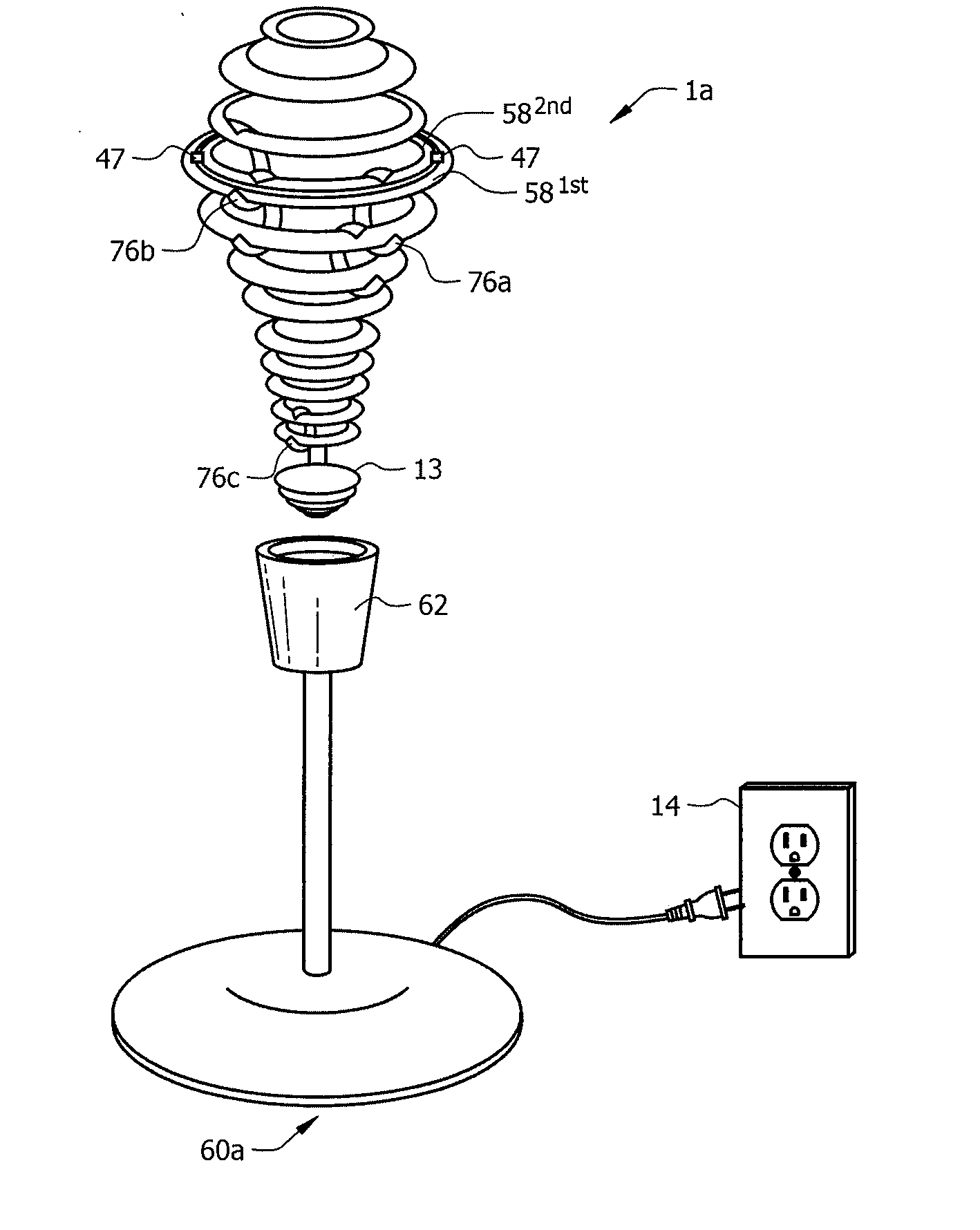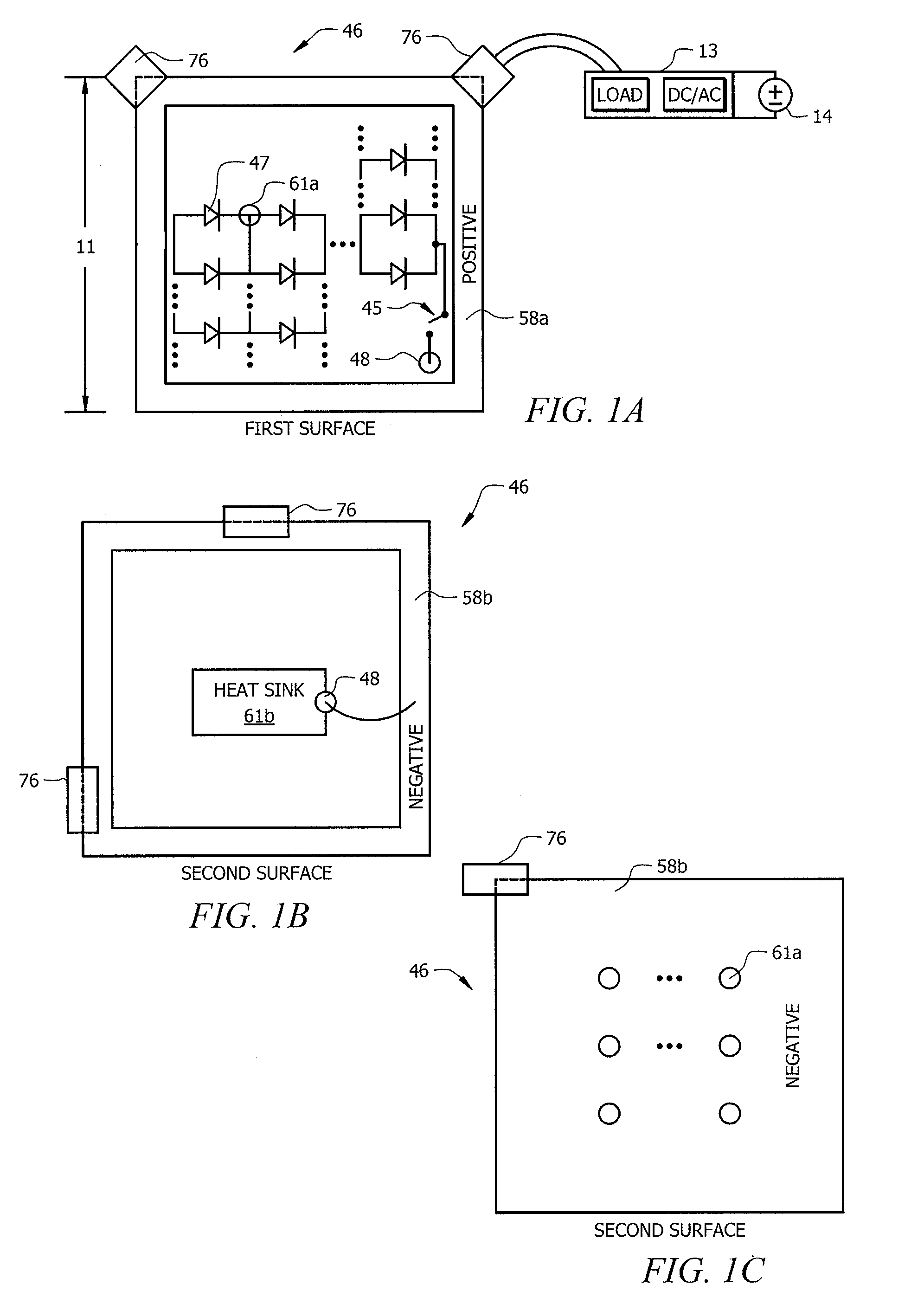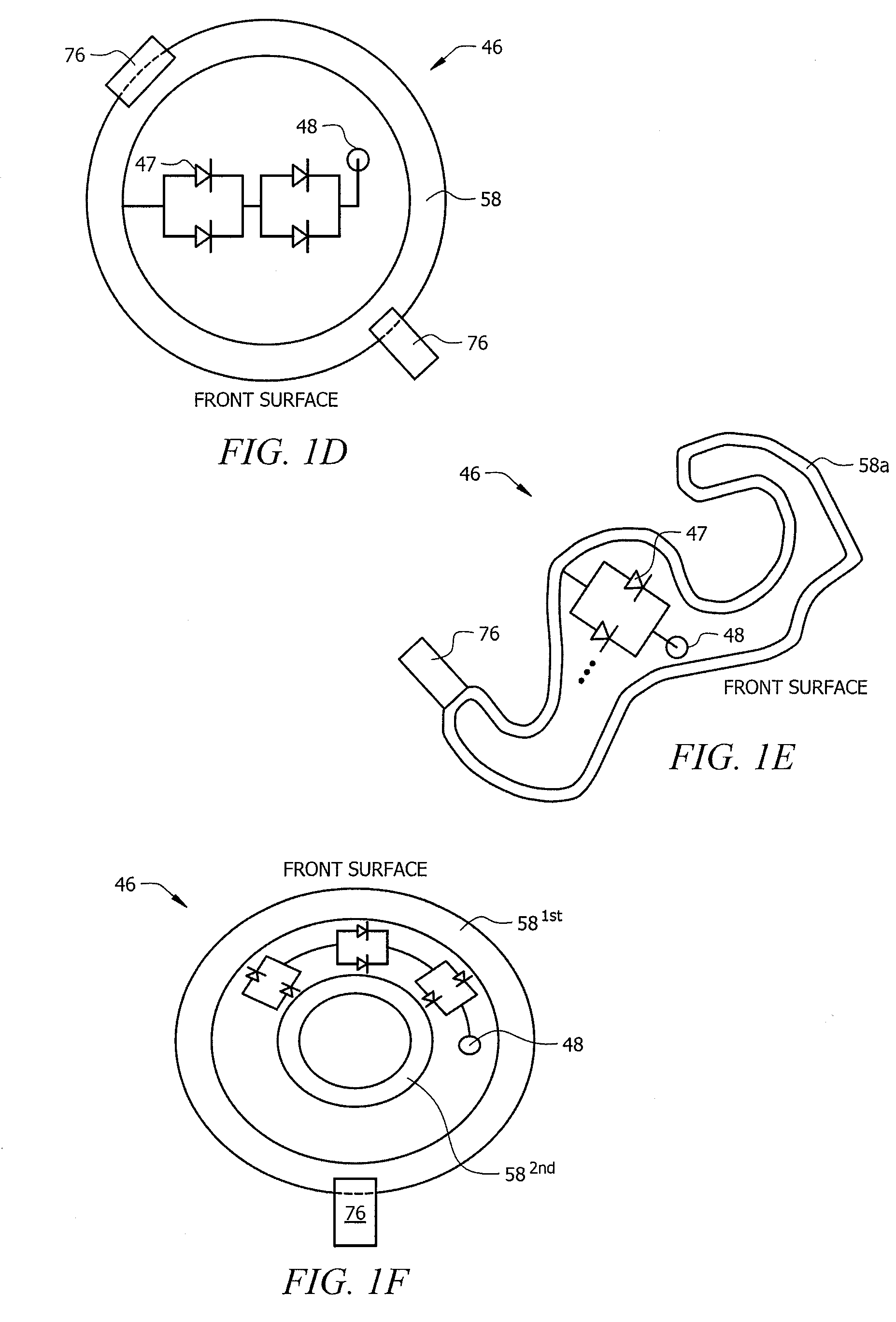Versatile lighting units
a technology of lighting units and lamps, applied in the direction of lighting support devices, lighting and heating apparatus, coupling device connections, etc., can solve the problems of environmental threat, relatively large power consumption of lighting units such as incandescent lighting units (e.g., standard metal filament and halogen lighting units), and more expensive installation initial cos
- Summary
- Abstract
- Description
- Claims
- Application Information
AI Technical Summary
Benefits of technology
Problems solved by technology
Method used
Image
Examples
Embodiment Construction
[0025]FIGS. 1A-1F show embodiments of the present invention which provide a versatile lighting module 46 which may be utilized alone or in combination with other lighting modules 46. Lighting module 46 comprises a substrate 11. Substrate 11 can be flexible and / or rigid and be made of any material commonly used in the semiconductor industry for example: mylar, polyimide, polyether ether ketone (PEEK), transparent conductive polyester film, fire resistant (e.g. FR-4, FR-6, metal clad) circuit board material, and / or the like. Substrate 11 can be an electrical and / or thermal insulator, and / or the like. Substrate 11 also can be of any color desired including colors that focus light or colors that provide for specular or diffuse reflection. For example, substrate 11 can be white, which may aid in the diffusion of light. Substrate 11 of embodiments can be of any dimension (e.g. height, width, length) and shape (square, rectangular, triangular, symmetrical, asymmetrical, circular, spherical...
PUM
| Property | Measurement | Unit |
|---|---|---|
| degree angle | aaaaa | aaaaa |
| angle | aaaaa | aaaaa |
| angles | aaaaa | aaaaa |
Abstract
Description
Claims
Application Information
 Login to View More
Login to View More - R&D
- Intellectual Property
- Life Sciences
- Materials
- Tech Scout
- Unparalleled Data Quality
- Higher Quality Content
- 60% Fewer Hallucinations
Browse by: Latest US Patents, China's latest patents, Technical Efficacy Thesaurus, Application Domain, Technology Topic, Popular Technical Reports.
© 2025 PatSnap. All rights reserved.Legal|Privacy policy|Modern Slavery Act Transparency Statement|Sitemap|About US| Contact US: help@patsnap.com



